Introduction to PNC-27
PNC-27 is a synthetic 32-amino-acid peptide designed to target cancer cells by inducing selective cell death through necrosis. Developed in 2000 by researchers at SUNY Downstate Medical Center, it was initially explored for its potential against HIV but later gained attention for its anticancer properties. PNC-27 consists of residues 12–26 from the HDM-2 binding domain of the p53 tumor suppressor protein, linked to a membrane residency peptide (MRP) derived from the antennapedia protein sequence. This design allows PNC-27 to penetrate cell membranes and target HDM-2 (human double minute 2), an oncoprotein overexpressed on the membranes of cancer cells but not in normal cells.
PNC-27 has shown promise in preclinical studies for its ability to selectively kill cancer cells, including those from solid tumors (e.g., pancreatic, breast, ovarian) and non-solid tumors (e.g., leukemia), without harming healthy cells. Its mechanism involves forming transmembrane pores in cancer cell membranes, leading to rapid cell lysis. Despite its potential, PNC-27 is not approved by regulatory bodies like the FDA or EMA for clinical use due to concerns about contamination risks (e.g., bacterial presence in some samples) and insufficient large-scale clinical trials. The FDA has issued warnings against its use for cancer treatment, citing lack of approval and potential health risks from contaminated products. It remains a research compound for in vitro and animal studies.
How PNC-27 Works
PNC-27’s primary mechanism involves binding to HDM-2, a protein overexpressed on the plasma membranes of cancer cells, regardless of their p53 status. HDM-2 typically inhibits p53, a tumor suppressor, by targeting it for degradation. PNC-27’s p53-derived sequence (residues 12–26) mimics the HDM-2 binding domain of p53, forming a 1:1 complex with membrane-bound HDM-2. This interaction, facilitated by the MRP (KKWKMRRNQFWVKVQRG), allows PNC-27 to insert into the cancer cell membrane, inducing the formation of transmembrane pores. These pores disrupt membrane integrity, causing rapid cell lysis and necrosis, as evidenced by lactate dehydrogenase (LDH) release in studies. Unlike apoptosis-inducing agents, PNC-27’s action is p53-independent, making it effective against p53-null cancer cells, such as the K562 leukemia cell line.
Electron microscopy studies have confirmed pore formation in cancer cell membranes within minutes of PNC-27 exposure, with no such effects observed in normal cells like fibroblasts or lymphocytes. Conformational energy calculations and NMR studies show that PNC-27 adopts an amphipathic alpha-helix-loop-alpha-helix structure, aligning closely with the native p53-HDM-2 binding conformation, which enhances its specificity for cancer cells. Additionally, PNC-27 may enhance the efficacy of other anticancer drugs (e.g., paclitaxel, rapamycin) by lowering their IC50 values, suggesting potential synergistic effects in combination therapies.
Benefits of Using PNC-27
PNC-27 offers several potential benefits, primarily supported by preclinical studies and in vitro experiments. Below are the key benefits:
Selective Anticancer Activity: Induces necrosis in a variety of cancer cell lines, including pancreatic, breast, ovarian, cervical, and leukemia cells, while sparing normal cells like fibroblasts and lymphocytes, due to its specific binding to HDM-2 on cancer cell membranes.
Broad-Spectrum Efficacy: Effective against both solid tumors (e.g., pancreatic, colon, lung) and non-solid tumors (e.g., acute myeloid leukemia), including p53-null cells, broadening its potential therapeutic scope.
Rapid Action: Causes cancer cell lysis within minutes to hours by forming transmembrane pores, offering a faster mechanism of action compared to apoptosis-based therapies.
Synergistic Potential: Enhances the efficacy of other anticancer agents, such as paclitaxel and methotrexate, by reducing their IC50 values, potentially improving outcomes in combination therapies.
Tumor Suppression in Vivo: Demonstrates tumor eradication in animal models, such as nude mice with pancreatic cancer xenografts, without significant toxicity to healthy tissues.
Potential for Targeted Delivery: When conjugated to nanoparticles (e.g., single-walled carbon nanotubes), PNC-27 enhances focal accumulation in cancer tissue, improving therapeutic outcomes in models like colon adenocarcinoma.
Despite these benefits, PNC-27’s clinical application is limited by regulatory concerns, including reports of bacterial contamination (e.g., Variovorax paradoxus and Ralstonia insidiosa in some samples) and a lack of FDA approval. Its use is restricted to research, and human administration carries risks of serious adverse events, such as gastrointestinal hemorrhage reported in one case study.
Certificate of Analysis
The following technical details outline the properties of PNC-27 5mg, providing a scientific snapshot of the peptide.
Property | Description |
|---|---|
Chemical Sequence | H-Pro-Pro-Leu-Ser-Gln-Glu-Thr-Phe-Ser-Asp-Leu-Trp-Lys-Leu-Leu-Lys-Lys-Trp-Lys-Met-Arg-Arg-Asn-Gln-Phe-Trp-Val-Lys-Val-Gln-Arg-Gly-OH |
CAS Number | 1159861-00-3 |
Molecular Formula | C188H293N53O44S |
Molecular Weight | 4031.70 g/mol |
Appearance | White Lyophilized Powder |




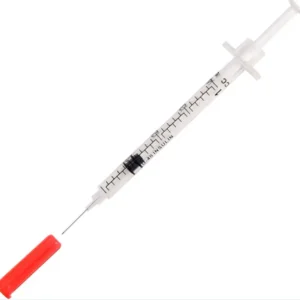
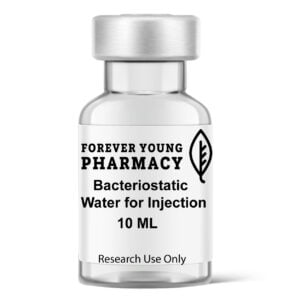
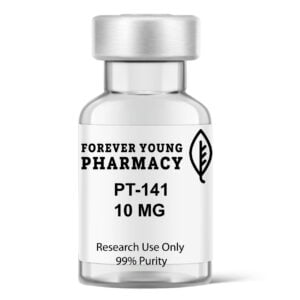
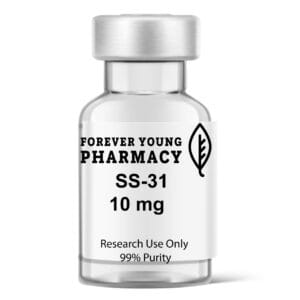

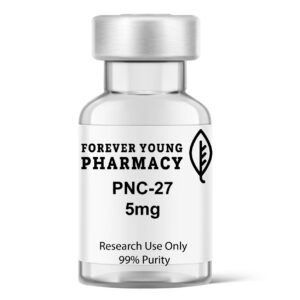
Reviews
There are no reviews yet.